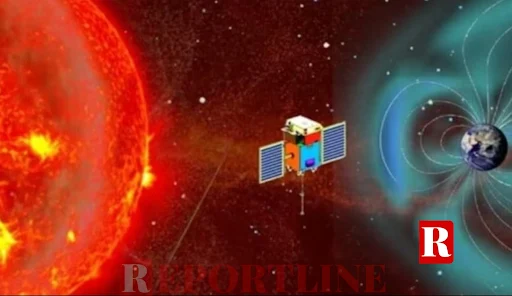New Dehli - India's inaugural solar mission, Aditya-L1, achieved a major milestone as it reached the Lagrangian point (L1) on January 6, 127 days post-launch on September 2, 2023. Situated approximately 1.5 million km from Earth, this location allows the spacecraft to continuously observe the sun.
Precision Halo Orbit Insertion by ISRO
The Indian Space Research Organisation (ISRO) executed a precise halo orbit insertion for the Aditya-L1 spacecraft, placing it around the Lagrangian point (L1) after a 1.5-million km journey. The maneuver, conducted by ISRO scientists and engineers at the ISRO Telemetry Tracking and Command Network (ISTRAC) in Bengaluru, involved corrections to ensure the spacecraft's exact placement.
ISRO Chairman S Somnath affirmed the success of the halo orbit insertion, emphasizing the accuracy of the process and the spacecraft's current position. Prime Minister Narendra Modi celebrated the achievement, praising the dedication of scientists and highlighting the significance of India's pursuit of space exploration.
Understanding Aditya-L1's Halo Orbit
The Aditya-L1 spacecraft now follows a periodic halo orbit, situated around 1.5 million km from Earth on the Sun–Earth line, with an orbital period of about 177.86 earth days. This unique orbit minimizes station-keeping maneuvers, reducing fuel consumption and ensuring an uninterrupted view of the Sun for the mission's anticipated five-year lifespan.
Mission Objectives and Payloads
Aditya-L1, India's first solar observatory, is designed to continuously observe the sun without any obstruction. Equipped with seven payloads, it will study the photosphere, chromosphere, and the sun's outermost layer (corona) using electromagnetic and particle detectors. The mission aims to gather crucial information on coronal heating, coronal mass ejection, flare activities, space weather dynamics, and particle and field propagation.
Lagrange Points and L1
ISRO provided insight into Lagrange points, explaining how these positions in space, such as L1, allow spacecraft to stay with reduced fuel consumption in a two-body gravitational system. L1, positioned between the sun and Earth approximately 1.5 million km away, enables continuous solar observation without occultation or eclipse.
Aditya-L1's Journey Timeline
The successful halo orbit insertion marks the culmination of Aditya-L1's journey, starting with its launch on September 2. Noteworthy milestones include four earth-bound maneuvers by ISTRAC between September 3 and 15, leading to the Trans-Lagrangian 1 insertion maneuver on September 19, initiating its 110-day trajectory to the L1 point.
Aditya-L1's mission, with a planned five-year lifespan, holds the promise of providing valuable insights into various solar phenomena, contributing to our understanding of the sun's behavior and its impact on space weather.




Social Footer